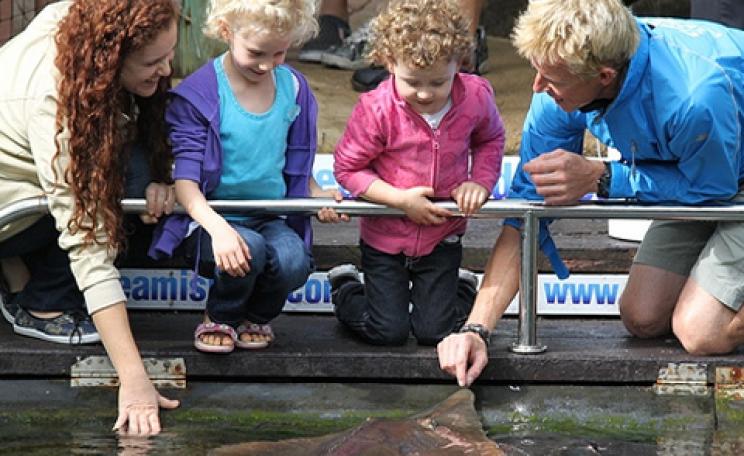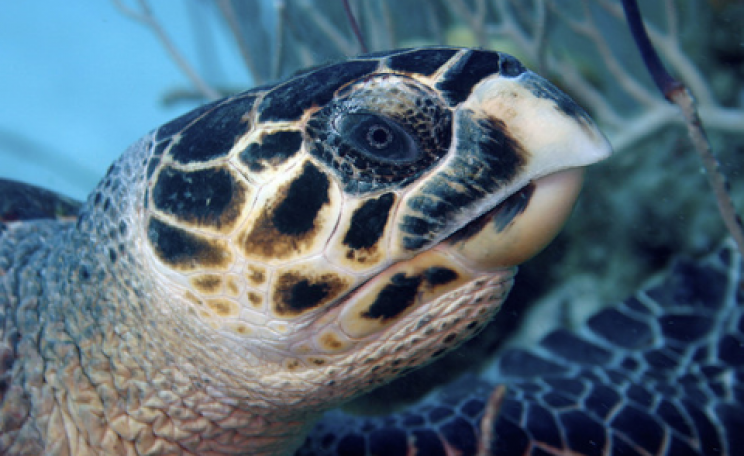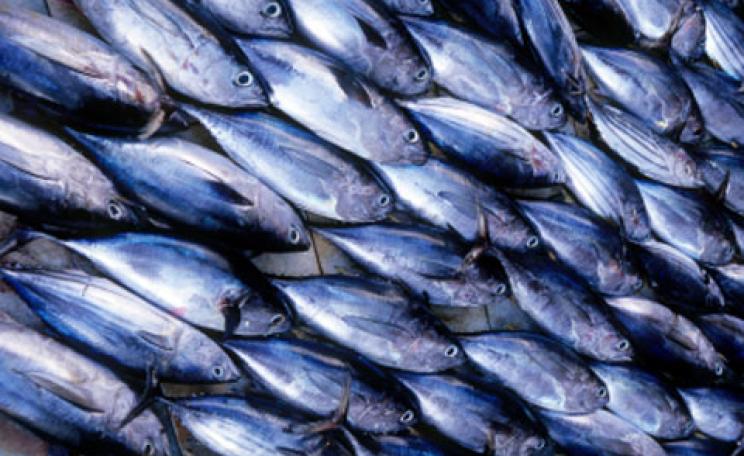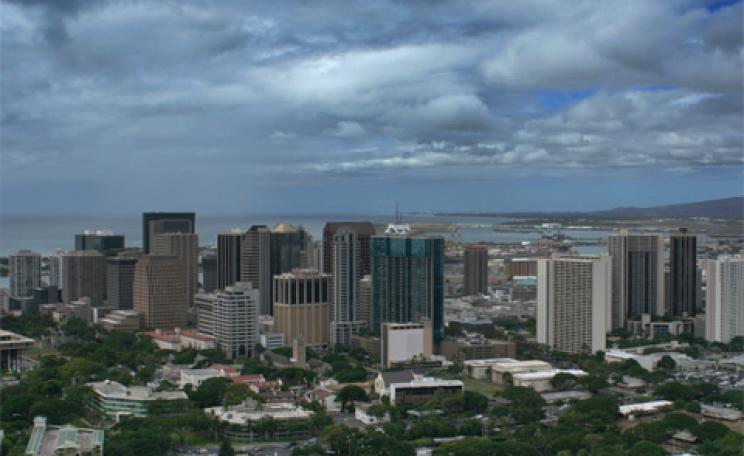The Caribbean has lost 60 per cent of its coral reef over the last 30 years or so. Bonaire has only lost 30 per cent
The giant star coral seems to appear out of nowhere as we swim slowly along Bonaire’s northwestern coast about 12 metres below the surface. Standing seven metres tall on a steep slope, it is a deep, rich green, shaped like a pile of Darth Vader helmets, each with an overhang under which lurks a metallic-red squirrelfish or a dainty damselfish. All around us, soft corals and sponges rise like bushes in shades of purple, ochre and green while aquamarine parrotfish nibble at algae.
Andrew Bruckner, a coral biologist leading an intensive survey of Bonaire’s reefs, waves at me to emphasise the star coral’s size and raises a thumb to indicate how healthy it is. 'This is one of the last places in the Caribbean where you can see really big star corals,' says Bruckner, the chief scientist of the Washington-based Living Oceans Foundation, after we get to shore. 'That one is probably 600 to 800 years old.'
An estimated 60 per cent of the Caribbean’s living coral cover has disappeared in the last 30 years. But Bonaire has only lost 30 per cent. 'Bonaire’s reefs are in better shape than any Caribbean island by far,' says Bruckner. 'The big question is why?' This year, he and a team of nine scientists carefully measured the health of corals and the density and diversity of fishes and relationships with algae and other invertebrates. 'If we can figure out why Bonaire is in such good shape, we can give other Caribbean islands the tools they need to bring back their reefs before they disintegrate.'
Bonaire's luck
There are some immediately apparent contributing factors: Bonaire is a flat, coralline island that gets little rainfall, so runoff of dirt, a known killer of corals, is minimal. No hurricane passed the island for virtually all of the 20th century. When Captain Don Stuart arrived in Bonaire in the 1970s to set up one of the first recreational diving businesses, he remembered elk and stags were so thick he had to dig a channel from the beach just to allow his divers to reach deeper waters.
Elsewhere in the Caribbean, the reefs were already far from pristine. The first Spanish colonists wiped out many of the turtles and manatees that grazed on algae and kept intact the reef's system of checks and balances that allowed the corals to flourish. After World War II, mass-produced masks, fins and spear guns allowed fishermen to quickly wipe out the large groupers, snappers and parrotfish that held the ecosystem in balance.
'People depend too much on fish in the Caribbean,' notes fisheries expert Daniel Pauly. Unlike the coral atolls of the Pacific or the Indian Ocean, the Caribbean islands are high and the dropoff is relatively steep, so there isn’t much shallow water for corals, most of which live symbiotically with algae that depend on sunlight. 'The populations are large and the reefs are small,' he adds. 'The tourism industry pays a premium for the big fish and the local people take the small ones to survive.'
Saved by tourism
Alan Friedlander, a marine biologist who studies both the Caribbean and the Pacific, says, 'Every region has suffered from overfishing but the Caribbean has been more affected than any other.' In Bonaire, the clear water and the profusion of corals created a virtuous circle: when recreational diving developed around the world, Bonaire became one of its magnets, in part because the most spectacular areas are within a hundred metres from shore. There is no need for boats here. The income brought in by the free-spending divers drew the autonomous government of this Dutch colony to severely restrict fishing (and ban spear-fishing entirely) so there are still more reef fish here than in any other large island in the Caribbean. Today, diving is the island’s the main source of outside income.
While Bonaire’s reefs prospered, in the rest of the Caribbean, the last check on algae - coral’s natural competitor for habitat - was a species of algae-eating, long-spined sea urchin called diadema antillarum. That was virtually wiped out in 1982 by a disease that was never identified. The result was the rapid transformation of many of the region’s reefs from coral-dominated to algae-dominated; the first large ecosystem on Earth to suffer such a decline. There are only about 60 species of corals in the Caribbean today, compared to over 300 in the Indo-Pacific. Scientists believe that this low number contributed to the decline and to the spread of coral diseases.
 |
| The author looking over star coral along Bonaire's northwestern coast |
But Bonaire was special. 'When I started here in ‘95, the reefs still looked much like the first detailed descriptions we got in the 1950s,' says Friedlander. 'There were still some locations with healthy stands of elk and stag in the first seven metres, then in the next 12 metres down you had dense aggregations of massive star corals, and in the deepest areas (20 to 40 metres) the bottom was carpeted by giant sheets of lettuce coral.'
At the time Bonaire's coral was similar to other islands except Jamaica, Hispaniola and Florida, which had already lost most of their corals. Today, says Bruckner, virtually all of the elk and stag have died, leaving fields of rubble of sand and broken branches. In the next layer, the smaller star corals are still largely intact, while the lettuce coral has significantly declined because of disease and bleaching. Only a few of the giant star corals remain.
The culprits for the most recent massacre are two-fold. In 2005, a spell of hot weather caused 80 percent of the Caribbean’s corals to force out the microscopic symbiotic algae that provide them with food and colour, leaving them white. The phenomenon is known as coral bleaching. If the water doesn’t cool down, within a few months, the corals die. Around 40 per cent of the remaining Caribbean corals died that year. Bonaire, however, suffered less than other areas.
The second cause is the diseases that tend to follow bleaching and kill the corals that survived it. 'We know that in the past 3,000 years, there has never been the kind of mass losses of elk and staghorn coral from disease that we’ve seen since the late 70s,' says Bruckner. On the next dive, Bruckner points to other star corals that are half green, half brown, separated by a whitish line. That’s white plague disease, which in a matter of weeks can kill a coral that took decades or centuries to grow. He gives a thumb-down: the coral head will probably die. But on many other similarly sick coral heads, he points to little lumps of live coral on the dead, brown parts; thumb up instead.
Back on the pebble beach, Bruckner takes off his mask and explains. 'What we’re seeing here is a reef that’s suffered some disease but is still reproducing, which means that new coral colonies are able to settle on the dead corals’ skeletons.' That, he says, is because there are enough algae-grazing fish, such as parrotfish and surgeonfish living in the reefs, to nibble off the algae growing on the dead coral, leaving it open for coral polyps to settle. As a result, the diseases are having less of an impact than elsewhere, which indicates the corals are more resistant. 'We don’t know why,' shrugs Bruckner.
Climate-change resilient
What really intrigued the scientists was that the juvenile corals that settled on the skeletons of the dead ones were often different species.
'We’re seeing a shift from a reef dominated by four corals – stag, elk, star and lettuce – to one with dozens of species,' says Bruckner. 'The big question is whether this new pattern is going be more resistant to climate change.' The summer of 2010 was exceptionally warm in the Caribbean, particularly at the intersection of the Greater and Lesser Antilles. Bonaire was less affected. Over in St. John, U.S. Virgin Islands, marine biologist William Miller says last summer’s hot spell and bleaching was the second most lethal to corals in his 25-year work in the region. 'The 2005 event was worse, it bleached 90 percent of our corals and killed 60 percent,' he says.
Between October 2009 and August 2010, the water was above the bleaching threshold, he said. Only Hurricanes Earl and Omar churned up the water enough to bring the shallow temperatures down. The fact that both events occurred within five years suggests that they could become more common. A 1998 event devastated much of the Pacific but there the recovery rate is much faster, in part because there are more reef fish and more species of coral.
For the long term, Bruckner is optimistic. 'The historical record shows corals are pretty adaptable,' he says. 'If we can restrict fishing and pollution and create more marine reserves, I think we can save some of the Caribbean’s coral reefs. But even if we don’t, in places like the remote Pacific islands, I think the more vulnerable coral species will die off and be replaced by tougher ones. I just don’t see them dying off completely.'







